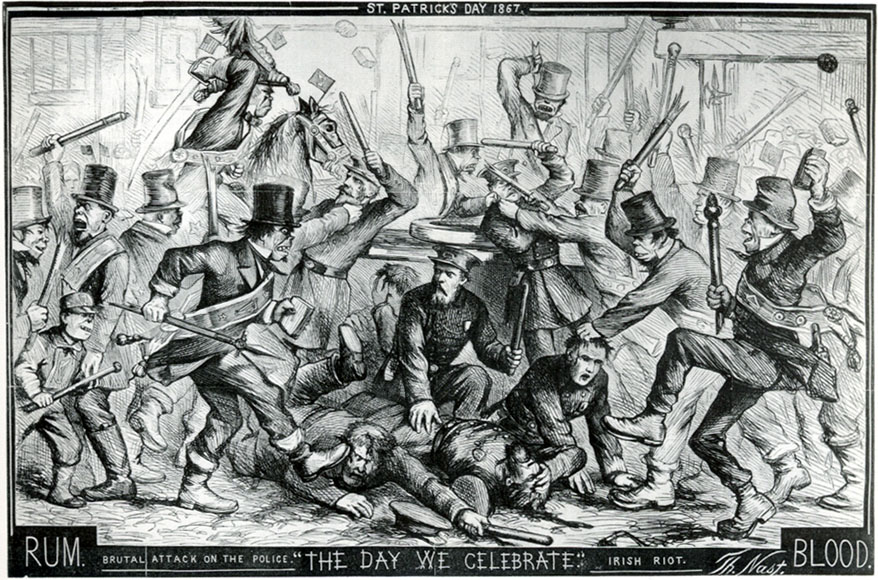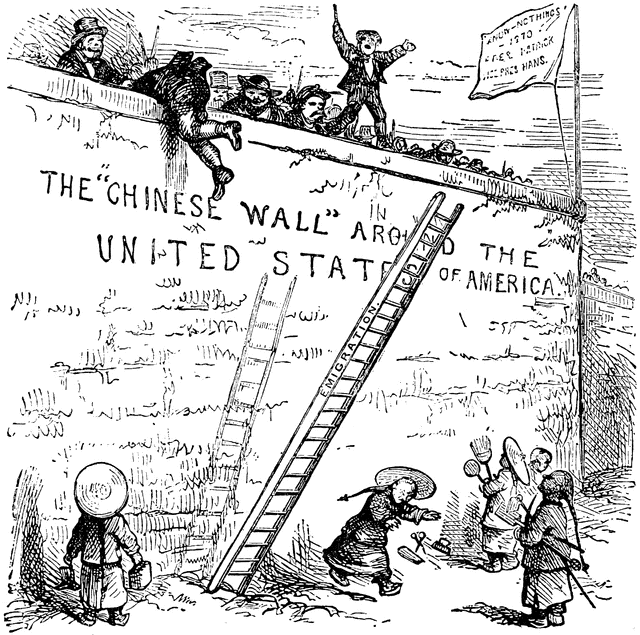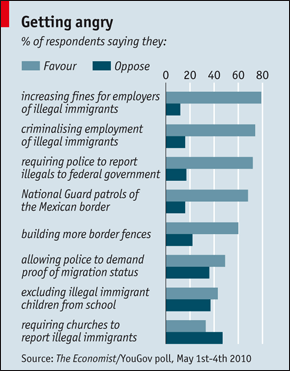Nov 2, 2010
Welcome! Watch this first...
Nov 1, 2010
Conclusion
The wealth of nations and proximity are the largest contributors to immigration, so the debate continues in America and abroad. The promise of prosperity and the romantic deception of capitalism and free markets to those who are willing to work for it is a compelling reason to jump boarders. But these undocumented workers cost American jobs and tax revenue. Many questions arise of what to do about the immigrant situation.
“Should we just grant them amnesty”? We could, and at least then they could be documented for tax purposes. But the problem of job availability still remains, business owners want to open up boarders because it makes the work force more competitive, but carries the unintended consequences of depreciating the quality of life for the American working family.
“Should we create laws that allow us to profile in the interests of deportation”? Although an aggressive and effective plan, it is not a permanent fix to a persistent problem. Plus the problems of legality come into question.
Whatever the case it is easy to see how there are multiple angles and viewpoints of what to do and how to do it. Both positive and negative impressions of policies in place, and future
Theories of Political Cartoons
2010
As a group, we wanted to make a focus of the cartoons from this year that most recently depict the immigration debate. These contemporary cartoons feature President Obama many times, and often have a pro-immigration sentiment. However, the other side is portrayed as well. Contemporary immigration cartoons are just as hot a commodity as current cartoons about the battles in the Middle East, the recession, the election Nov. 2, and the debate about the Park51 Islam community center two blocks from Ground Zero, in New York City. View examples of these current cartoons on the first tab, titled "2010."
Other cartoons that we analyzed frame Pres. Obama as one who may be against undocumented workers, but is willing to let them in if it helps to further his political platform and earn him votes. Obama was framed as the Statue of Liberty, a donkey, and a magician, to name a few, as can be seen in the "Obama" tab.
Historical
Although plenty of cartoonists are feasting on the current debate, especially because of the passion on either side, and framing it in different ways, this isn't the first time that a similar debate has raged- and that includes the youthful 200-plus years of this country. This "Historical" tab will show examples of how other nationalities have faced similar struggles in entering the country, whether it be the Chinese, Irish, or an array of others. A particular point of notice is how the immigrants are portrayed as pesky and oftentimes, quite evil, suggesting that these new members of the country will do nothing but bring problems and sorrow to a country founded on courage and righteous principles.
International
The United States is not the only nation to struggle in determining whether or not to permit immigrants to enter their country without legal documentation. On this tab can be found plenty of examples of especially-European countries who have faced similar crises. Many of these nations are framed as power-hungry and domineering through drawings of their fine attire and condescending attitude.
Pro-Immigration
Many political cartoons that we have researched and analyzed have a pro-immigration flavor. Cartoonists used emotional empathy with scenes like undocumented workers building a fence that will eventually keep them out of the United States, all for five bucks an hour. Many pro-immigration cartoonists framed the government to be evil and self-serving to invoke further empathy for the undocumented and their desperate plea to gain greater freedoms in this country. Others used iconic symbols like the State of Liberty and Uncle Sam, framing them as tyrants, to try to display the idea that cruel treatment from those who are supposed to represent the ideals of the country are the ones who are cutting the undocumented workers short of rights that they deserve. Examples can be viewed in the "pro-immigration" tab.
Anti-Immigration
On the other hand, there were some anti-immigration cartoons framed to make the undocumented workers seem lazy, pesky, or leeches of the benefits of the United States. In this kind of framing, everything was done to cause the reader to view those who crossed the border as annoying to invoke the thought that they aren't worth being here, especially because they broke the law to do it. See examples in the "anti-immigration" tab.
Introduction
There have not been enough studies on whether these cartoons affect their intended audience like cartoons from a newspaper, but such research is in the works. Reports like this one are forthcoming. However the fact is that the Internet is far cheaper and more available than any newspaper.
Mark Fiore, one of the main animated cartoonists featured on our blog, worked at the San Jose Mercury News before feeling stifled and setting off on his own. You can read more about him and explore his webpage here.
Also included in our selection of video clips is footage from Jon Stewart, Stephen Colbert, and Glenn Beck. Each newscast covers a slightly different point of view.
Arizona Immigration Law Divides Latinos, Too-Published: October 30, 2010
Arizona Immigration Law Divides Latinos, Too
By MARC LACEY
Published: October 30, 2010
PHOENIX — Arizona’s immigration law, which politicians have debated in the Legislature, lawyers have sparred over in the courtroom and advocates have shouted about on the street, has found its way up a driveway in central Phoenix, through the front door and right onto the Sotelo family’s kitchen table.
A version of this article appeared in print on October 31, 2010, on page A20 of the New York edition.
Interactive Map
Report: Foreign-born workers gained jobs while native-born lost them-Published: October 30, 2010 09:12PM

Updated: October 31, 2010 12:12AM
© 2010 The Salt Lake Tribune
Utahns of two minds on immigration reform-Published: November 1, 2010 12:33PM

Updated: November 1, 2010 12:33PM
Chris Detrick | The Salt Lake Tribune Washington County Sheriff Kirk Smith speaks during a roundtable discussion on immigration reform at the Utah State Capitol on Tuesday. Gov. Gary Herbert invited 31 community leaders to the summit in order to hear their viewpoint on immigration reform.
© 2010 The Salt Lake Tribune
Introduction to Historical Cartoons
More Historical Cartoons
Introduction to Facts
Warnings abound in enforcing immigration job rules- Monday, Nov. 1, 2010 9:17 a.m.
The AP reviewed summaries of 430 audits conducted between July 1, 2009, and January 31, 2010.
During the seven-month period, ICE agents found 22,000 "suspect" documents among the more than 86,000 I-9s reviewed. Suspect documents mean the person's legal authorization to work in the U.S. is questionable.
Administrative arrests, usually arrests of immigrants without the proper documentation, dropped from nearly 5,200 in the fiscal year 2008 to 765 through August in fiscal year 2010. Criminal arrests of employers rose slightly, from 135 in 2008 to 150 so far in that same time period. Criminal arrests of workers dropped from 968 to 208.ICE audited more than 200 companies with fewer than 25 employees, including 50 businesses agents listed as having fewer than five workers. More than 250 of the companies didn't have a single suspect form.
ICE officials say their I-9 audit efforts are part of a comprehensive strategy.
"We're trying to create a culture of compliance," said Brett Dreyer, the current head of ICE's work site enforcement unit. "We're using the best tool available. We believe in this work site mission as part of the entire strategy."
Dreyer said that in the mid-1990s, immigration agents would target industries known to have a significant number of illegal immigrants. Now, ICE prefers to follow investigative leads to better use their resources, he said.
But without large fines and arrests, it's hard to tell how much effect the audits are having, said Julie Myers, a former Assistant Secretary at ICE during the Bush administration.
ICE reported that it has collected more than $6.9 million in fines this year, up from $1.33 million in 2009. But some of those fines come from cases initiated in previous years, including the $1 million from Abercrombie & Fitch.
More than 200 companies were fined in fiscal year 2010 — some fines were as low as a few hundred dollars. There were also examples of harsher fines. Abercrombie & Fitch will pay more than $1 million for failing to verify the employment eligibility of its workers in stores in Michigan, authorities announced in September, after the company agreed to have the case made public.
But most cases go unnoticed. The U.S. Supreme Court has ruled that the federal government can't release the names of the companies that have been fined, unless the companies agree.
The audits don't go unnoticed by the workers.
In September 2009, American Apparel said it laid off 1,600 workers with suspect immigration documents after the company was audited.
Peter Schey, spokesman and attorney for American Apparel, said the audits result in workers being pushed further underground. He said most workers don't leave the United States — life here is still better than in their home countries.
Schey, along with other immigrant-rights advocates, want to see ICE conduct the audits in collaboration with the Department of Labor to hone in on employers that are violating labor laws.
"If they're hitting the right people, why would they have 250 companies in total compliance? Why would they only have arrested 135 criminal employers? They have their targets on the wrong employers," Schey said.
http://www.deseretnews.com/article/700077951/Warnings-abound-in-enforcing-immigration-job-rules.html?pg=2
What America Believes

*Our View: Americans who get their news from more balanced sources, tend to lean towards a more moderate solution to America's immigration problem. Those who watch and read more bloated news, like Immigration Counters that have no real evidence behind their statistics, lean to more extreme approaches.
Period of Entry of the Unauthorized Immigrant Population
January 2009
Estimated population
January 2009
Period of entry Number Percent
All years . . . . . . . . . . . . . . . . . . . . . . . 10,750,000 100
2005-2008 . . . . . . . . . . . . . . . . . . . . . . 910,000 8
2000-2004 . . . . . . . . . . . . . . . . . . . . . . 3,040,000 28
1995-1999 . . . . . . . . . . . . . . . . . . . . . . 3,080,000 29
1990-1994 . . . . . . . . . . . . . . . . . . . . . . 1,670,000 16
1985-1989 . . . . . . . . . . . . . . . . . . . . . . 1,190,000 11
1980-1984 . . . . . . . . . . . . . . . . . . . . . . 860,000 8
http://www.dhs.gov/xlibrary/assets/statistics/publications/ois_ill_pe_2009.pdf
*Our take: Note the significant drop since the early 1990s. This can be attributed to a stronger border patrol and stricter laws. This also contradicts the belief of many American people that more undocumented workers are crossing into our country without legal status.
Racism, Prejudice, Fear
The Immigration Issue in Utah
The Arizona Law
Some Anti-Immigration Cartoons
Broken English
Legal & Illegal Immigration Labor
Obama & Immigrants
Arizona 2010
Oct 30, 2010
Oct 29, 2010
 Team Member Name: _Nicholas Larson________________________
Team Member Name: _Nicholas Larson________________________Publication__London Times________________Date: 2008____
Cartoonist:_Al Margoles__________________U.S./International
Title of the cartoon:_________________________________Cartoon#_4_
What action is taking place in the cartoon?
The president of Mexico, Felipe Calderon, is saying to George Bush “tear down this wall”.
Tone of the cartoon: 1) positive or negative framing of undocumented immigrants 2) positive or negative framing of immigration policies
What “reality” is constructed/framed about immigration/immigrants?
What they are making reference to is the famous Ronald Reagan speech to Mikail Gorbechev to tear down the wall separating East and West Berlin in the early eighties. The cartoonist is making a point that in America, we had an already established a precedent that walls separating people are not a good idea. The hypocrisy of the American govt. runs really thick in this cartoon. A negative image of the immigration policies of America are being framed in this cartoon.
The Day We Celebrate

Jon Stewart-Next Media
The Chinese Question

IMMIGRATION & UNDOCUMENTED WORKERS
• Cartoon Analysis Worksheet: Attach to cartoon.
Team Member Name: Mariah Noble
Publication Harper’s Weekly Date: 1871
Cartoonist: Thomas Nast U.S./International (circle)
Title of the cartoon: The Chinese Question Cartoon#___
What action is taking place in the cartoon?
A Chinese man is cowering on the ground with a woman (who we can interpret as Lady Liberty) between him and an angry mob of white Americans. A sign behind him refers to Chinese immigrants in derogatory terms.
Tone of the cartoon:
1) positive or negative framing of undocumented immigrants (circle answer)
2) positive or negative framing of immigration policies (Circle answer)
What “reality” is constructed/framed about immigration/immigrants?
This is a cartoon that sympathizes with Chinese immigrants. It illustrates the anger and hate that Americans generated, despite having laws and foundations that protect and reach out to those immigrants seeking better lives. The Chinese man is clearly distraught and humiliated by the allegations on the sign behind him. Lady Liberty is trying to comfort him while giving the mob a disapproving look. The members of the mob are ugly and angry. They carry weapons to harm the Chinese refugee, and there is an empty rope on a dead tree in the background, giving the viewer the impression that the mob will hang the Chinese man. The words on the sign describe the Chinese as “barbarians, heathens, the lowest and vilest.” The issue being addressed is prejudice and discrimination against Chinese immigrants. The Chinaman is stereotypically dressed, and the Americans are stereotypically rash in their words and actions. Americans blamed immigrants for problems, just as they do today. This cartoon uses irony to mock how Americans were accusing Chinese workers of being vile, barbaric heathens when in reality the American people’s actions of hostility toward the Chinese were far more wild and rash. The cartoon is framed so that people will see the humane side of the Chinese immigrant’s struggle for respect and peace in the United States.










